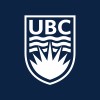
The Effect of Health Promotion Training on Life Qualities and Self-Care Powers in Stroke Patients...
StrokeNursing Caries2 moreThere are many methods that nurses use while providing care education to individuals. Tele-nursing, which is one of the current methods, is an innovative approach, but it is a useful method in meeting the post-discharge home care needs of patients who are dependent or partially dependent on others and who live in areas far from health care institutions. In today's health care delivery system, it is of great importance to develop a tele-nursing-based care approach by making effective infrastructure studies related to tele-nursing services. Although a limited number of studies have been conducted on different patient groups regarding the tele-nursing method in Turkey, no study has been found that determines the effect of tele-nursing education on patients' quality of life and self-care power in stroke patients. In this respect, it is thought that it is important to conduct studies that will examine the effects of tele-nursing on patients who need long-term care such as stroke at the national level. The aim of this study is to find out the effects of telenursing training based on self-care theory which was given to patients diagnosed with stroke on quality of life and self-care agency.

Acupuncture Therapy Combined With Breathing Training for Patients With Stroke Complicated
StrokeLung DiseasesThe goal of this prospective randomized controlled study is to explore the clinical efficacy of acupuncture therapy combined with breathing training in patients with stroke complicated with pulmonary infection. The intervention group and control group were treated with conventional drug therapy, rehabilitation therapy and breathing training for 2 consecutive weeks. On this basis, the intervention group additionally received acupuncture therapy. To evaluate the clinical efficacy of both groups.

Paired Associative Stimulation in Stroke
StrokeStroke is the third most common cause of death in the United States after heart disease and cancer, and the leading cause of long-term disability. This work will develop an innovative brain stimulation method (paired associative stimulation) which might set the stage for a new treatment for stroke rehabilitation.

Reaching in Stroke
StrokeThe project targets stroke survivors to investigate the effect of augmented feedback (using robotic force cues and visual feedback) on their upper limb reaching patterns and trunk compensatory movements.

Self Directed Stations for the Stroke Patient
StrokeEarly initiation of therapy post stroke has been associated with improved long-term outcomes, and functional activity dose during the first week of inpatient rehabilitation predicts both gait velocity at discharge and length of time to independent walking. The primary study objective is to pilot the feasibility of integrating a patient-directed activity program into inpatient rehabilitation following stroke. The second study objective is to identify if participation in the patient-directed activity program improves functional ability and health related quality of life.

The Effect of a Walking Assist Robot on Gait Function and Brain Activity in Stroke Patients and...
StrokeHealthyThe purpose of this study was to investigate the effects of the new wearable hip assist robot, gait enhancing and motivating system (GEMS) developed by Samsung Advanced Institute of Technology (Samsung Electronics Co, Ltd., Korea) on gait, sit-to-stand movement and cortical activation in elderly adults and stroke patients.

Novel Brain Signal Feedback Paradigm to Enhance Motor Learning After Stroke
StrokeStroke (795,000/year in the US and 30 million existing stroke survivors in the world) damages brain neural structures that control coordinated upper limb movement. To most effectively target the brain damage, interventions should be directed so as to restore brain control serving coordination of peripheral neuromuscular function. Currently, there is a lack of a transformative intervention strategy, and only limited efficacy is seen in response to neural rehabilitation that is only peripherally-directed (limbs e.g.) or only directed at the brain. This study will employ a novel neural feedback approach with a closed-loop, real-time paradigm to engage and retrain existing brain function after stroke. Real-time functional magnetic resonance imaging (rtfMIR) provides neural feedback with the advantage of precisely identifying the location of brain activity for multiple cognitive and emotional tasks. However, the rtfMRI is costly and precludes motor learning that requires sitting and engaging the upper limb in complex motor tasks during imaging acquisition. In contrast, real-time functional near-infrared spectroscopy (rtfNIRS), although not as spatially precise as rtfMRI, offers a low-cost, portable solution to provide brain neural feedback during motor learning. This proposal will utilize both technologies in a hybrid, sequential motor learning protocol. Moreover, the study protocol will also simultaneously involve both central effective signals (through neural feedback) and peripheral affective signals by employing neutrally-triggered functional electrical stimulation (FES)-assisted coordination practice, which produces peripherally-induced affective signals from muscle and joint receptors. This novel combination intervention protocol will engage the central nervous system, motor effective pathway training along with induction of affective signal production (FES-assisted practice), all of which will be implemented within the framework of evidence-based motor learning principles.

Short Message Service (SMS) Reminders for Stroke Secondary Preventative Medications
StrokeIschemic Attack1 moreSecondary preventative medications are prescribed to reduce the risk of recurrent stroke following ischaemic stroke. However, continuation rates can be as low as 50% and are likely to be multifactorial. One factor will be patients forgetting to take the medication or a reduced appreciation of the importance of the medication as the time from the stroke passes. Numerous approaches to improve persistence to secondary preventative medications have been tried. One simple approach is use of mobile phone text messages as a reminder for patients to take their medications. In this study, we will introduce an educational and motivational strategy to inform patients about their medications and explore whether a reminder intervention, using Short Message Service (SMS), improves adherence to antiplatelet drugs, antihypertensive medications and lipid lowering drugs. We will also explore whether this improves blood pressure and cholesterol levels in the first 3 months after stroke.

Home-based Balance Training Using Wii Fit After Stroke: A Feasibility Study
StrokeBACKGROUND: Virtual gaming systems offer new possibilities for home-based exercises (HBE) in rehabilitation. Pilot studies with stroke patients indicate that the application of Nintendo Wii® (WII) is practicable and can improve balance under clinical conditions. However, larger trials are necessary to verify these positive effects after discharge from the hospital. AIM: This study aims to prepare and optimize a phase III trial which compares the effects of two HBE programs for stroke patients. METHODS: A pilot study with randomized control design and repeated measures over three-months will be conducted. Twenty elderly stroke patients will be randomly allocated to an experimental group (EG) and a control group (CG). All participants will receive an introduction to a HBE program by an individual mentoring over 6 weeks. During the following 6 weeks the participants perform the HBE on their own. The EG will perform a balance exercise program using the WII, the CG will perform a balance exercise program without technical support. Recruiting potential, the participants' acceptance of the intervention and economic aspects will be examined. Additionally, basic information about sensitivity of change and potential effect sizes regarding the proposed instruments to measure mobility are expected.

Effects of Combined Treatment by Botulinum Toxin and Lokomat® on Walking Ability in Chronic Stroke...
Stroke75% patients in the chronic phase of a stroke keep walking disabilities. Focal spasticity in the paretic lower limb frequently causes these walking disabilities, and the gold standard treatment is intramuscular injection of Botulinum toxin A in the spastic muscles. To potentiate the effects of toxin, walking rehabilitation is usually prescribed in the weeks following injection, but the protocols vary and few have been evaluated in the medical literature. In particular, the effect on walking ability of combined treatment by botulinum toxin A and robot-assisted gait training has never been evaluated. Tested hypothesis: Robot-assisted gait training by Lokomat® motorized exoskeleton potentiates botulinum toxin's effects better than conventional walking therapy. The aim of this study was to evaluate the effects on walking ability of the association of focal spasticity treatment by Botulinum toxin and Lokomat-assisted walking rehabilitation in patients suffering from spastic hemiparesia after stroke in the chronic phase. Outcome: -Primary: distance walked (meters) in the six-minute walk test (SMWT) Prospective, randomized, controlled, opened, monocentric study with a crossover design. Recruitment of patients over 18 years of age, in the chronic phase of stroke, who have already been treated by Botulinum toxin injection for focal spasticity in our PMR ward. Assessment at Day one (D0), Week four (W4) and Week eight (W8). Following a preliminary study which had the six-minute walk test as a secondary outcome, the expected results are a significant improvement of the distance walked in the SMWT after robotic rehabilitation, and a lack of significant improvement following conventional therapy. The study should serve to further harmonize and optimize rehabilitation protocols after toxin injections, and to justify the use of robotic rehabilitation for patients in the chronic phase of stroke.
